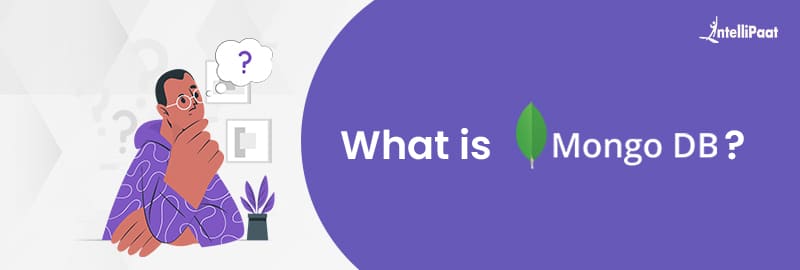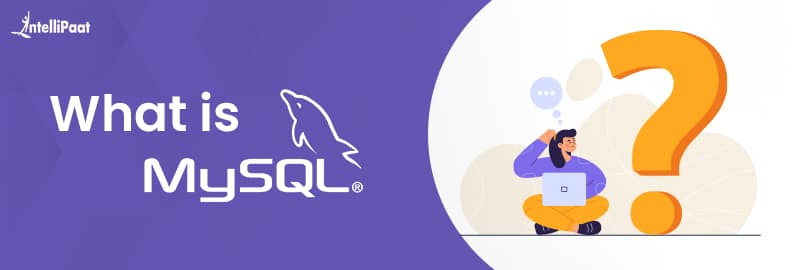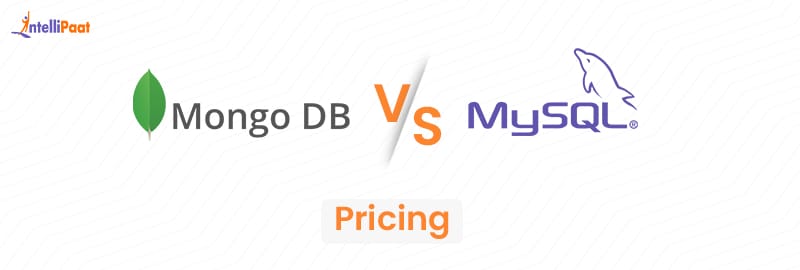Difference between MongoDB and MySQL
So, what is the difference between MongoDB and MySQL? Today, we will be learning just that in this blog.
MongoDB and MySQL both are pretty much in-demand databases for any web application, and both are an important part of Database Management Systems (DBMS).
Both are strong choices for many businesses but they are ideal for different use cases and support some different features that make them apart from each other. So we will be going to discuss in detail and analyze the various differences between MongoDB and MySQL.
The following are the topics that we will be covering to help you learn more about these two key terms in the world of databases:
Table of Content:
- DBMS Overview
- What is MongoDB?
- What is MySQL?
- Key Similarities between MongoDB and MySQL
- MongoDB vs MySQL: The Fundamental Differences
- MongoDB vs MySQL: Pricing
- Conclusion
Check out this MongoDB video tutorial for beginners by Intellipaat
To start learning about MongoDB vs MySQL, you will first have to know about Database Management Systems. So, here is a quick overview.
DBMS Overview
- A Database Management System is a collection of interrelated data and some set of programs to access the data.
- To organize various data in the form of tables, schema, views, etc, the DBMS is used.
- The main objective of a DBMS is to provide a way to store and retrieve database information that is both efficient and convenient.
- It is a system where some programs are collected and then it enables the users to create and maintain the database and it gets available to many users for different purposes also.
This Business Analyst Certification in Bangalore will provide you with a career path for becoming a successful business analyst.
What is MongoDB?

MongoDB is a unstructured database and what actually it means is that the data is not constructed to the shape of a table.
- MongoDB is getting very popular day by day because of its easy usability, speed, and scalability.
- It makes use of a nonrelational database. The nonrelational databases are usually document databases where the data is actually not interlinked to each other and this is how actually MongoDB is known.
- MongoDB supports querying in JSON where all the data is stored.
Reach out to our course advisors and enroll in Intellipaat’s MongoDB training.
What is MySQL?

MySQL is a client-server model which means that the database typically runs on a server and it leads to the fact that MySQL needs a server. MySQL uses the structured query language or SQL to define, update and query the database.
- SQL is used on all major relational database management systems.
- On many platforms and in many applications you can see that SQL is widely used, even Oracle languages are SQL itself.
You can reach out to our course advisors and enroll in Intellipaat’s SQL online course.
Key Similarities between MongoDB and MySQL
You will be surprised to know that there are so many similarities between MongoDB and MySQL, so let’s go ahead and find out some of the similarities.
- Although we call MongoDB and MySQL a database, both of them are used to create databases.
- We create a lot of tables in MySQL, similarly, in the case of MongoDB we call it a collection, which means the equivalent thing of the table in the world of MongoDB is called a collection.
- In the case of MySQL, you will come to know a lot about the Index, and the same thing is there for MongoDB.
- In the MySQL world, we have the primary key, and it consists of a huge impact on linking the tables. Similarly, we have the same when it comes to MongoDB. Here, each document stored in a collection requires a unique _id field. It is equivalent to what the primary key is in the case of MongoDB.
- Another key point is that in MySQL we have the concept of rows, we create a lot of rows to enter the data. Similarly the same stands for MongoDB, but it is termed as BSON documents or JSON also.
- MySQL and MongoDB support the programming languages such as Node.JS, Java, and Python.
Check out the difference between SQL and MySQL in our comparison blog on SQL and MySQL.
MongoDB vs MySQL: The Fundamental Differences
| MongoDB | MySQL |
| MongoDB is an open-source document-based and NoSQL database, which means the document represents the hierarchical relationship using a single record and there is no schema that defines how the data is stored in databases, this causes a lesser data migration. | MySQL is an open-source relational database management system and is used as a structured query language(SQL) which is used for accessing any data stored in any rows or columns. MySQL is developed by Oracle. |
| MongoDB does not require any functionality or proper definition of a schema. | MySQL requires a schema to define the tables in the database. The database administrator is requested to introduce the schema, which defines how different tables are stored in the databases. So the schema is an important part to be remembered in the case of MySQL. |
| In MongoDB you just need to drop the data in the BSON, JSON documents, the data, and the MongoDB database are stored in a binary format called BSON. | MySQL is required to define your tables and columns before storing anything and every row in a table must have the same columns. |
| In MongoDB, it supports JSON Query Language to work with various data. | In the case of MySQL, it uses Structured Query Language(SQL) which is used to perform actions on the database, and also to create new data, retrieve data, add and update data, etc. |
| MongoDB database can be scaled both vertically and horizontally. Horizontal scaling means scaling by adding more machines to your resources and vertical scaling means scaling by adding more powers like the RAM, CPU, etc. | MySQL database can be scaled vertically. |
| The use cases of MongoDB are content management, mobile applications, IoT, etc. | MySQL is Used for legacy applications or applications that require multi-row transactions, like accounting applications, etc. |
Preparing for interviews? Here is the MongoDB Interview Question and Answers for you to prepare.
MongoDB vs MySQL: Pricing

MongoDB and MySQL are open-source platforms and it’s free to use, you will get more features and benefits from the paid editions that they offer.
MongoDB- MongoDB offers various plans, free and paid. You can use its free platform deployed on a shared cloud. Here are its three editions:
- MongoDB Community Server: Free to use in Windows, OS X, and Linux platforms.
- MongoDB Enterprise Server: For any commercial purposes it is used.
- MongoDB Atlas: Runs on GCP, Azure, and AWS as it is a fully managed on-demand cloud database.
So, according to the requirements you have, you can choose your option based on the types of cloud, storage, security standards, etc.
It has three different pricing plans:
Shared: $0/month
Dedicated: Available at $60/month
Serverless: From $0.25/ million
MySQL- It has free editions, apart from it MySQL has different commercial plans:
MySQL Standard Edition: Available at $1600/annum
MySQL Enterprise Edition: Available at $2800/annum
MySQL Cluster CGE: Available at $8000/annum
Want to get certified in Power BI? Here is the Best Power BI Trainng in Bangalore you are looking for.
Conclusion
I hope you found this blog interesting and it will guide you about the various differences between MongoDB and MySQL.
MongoDB vs MySQL comparison cannot be debated as they are two innately different data management tools but both of them are valuable database solutions and also the most in-demand competitive services for web applications.
Drop any of your queries in our SQL Community and start a discussion.
The post Difference between MongoDB and MySQL appeared first on Intellipaat Blog.
Blog: Intellipaat - Blog
Leave a Comment
You must be logged in to post a comment.








